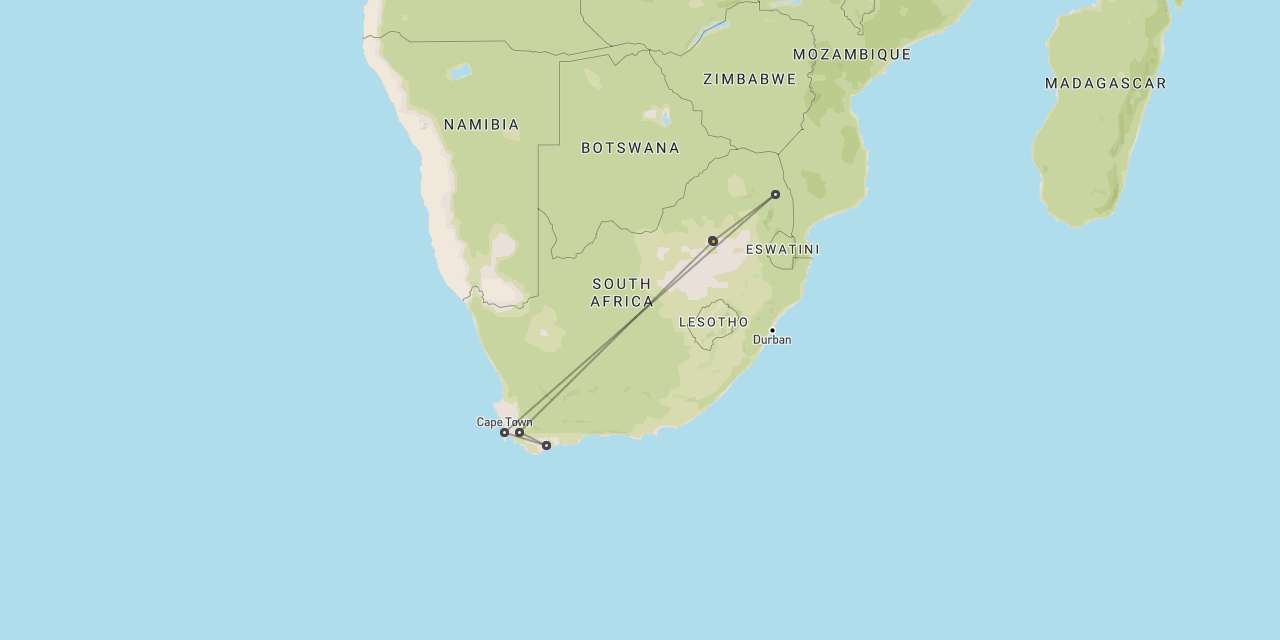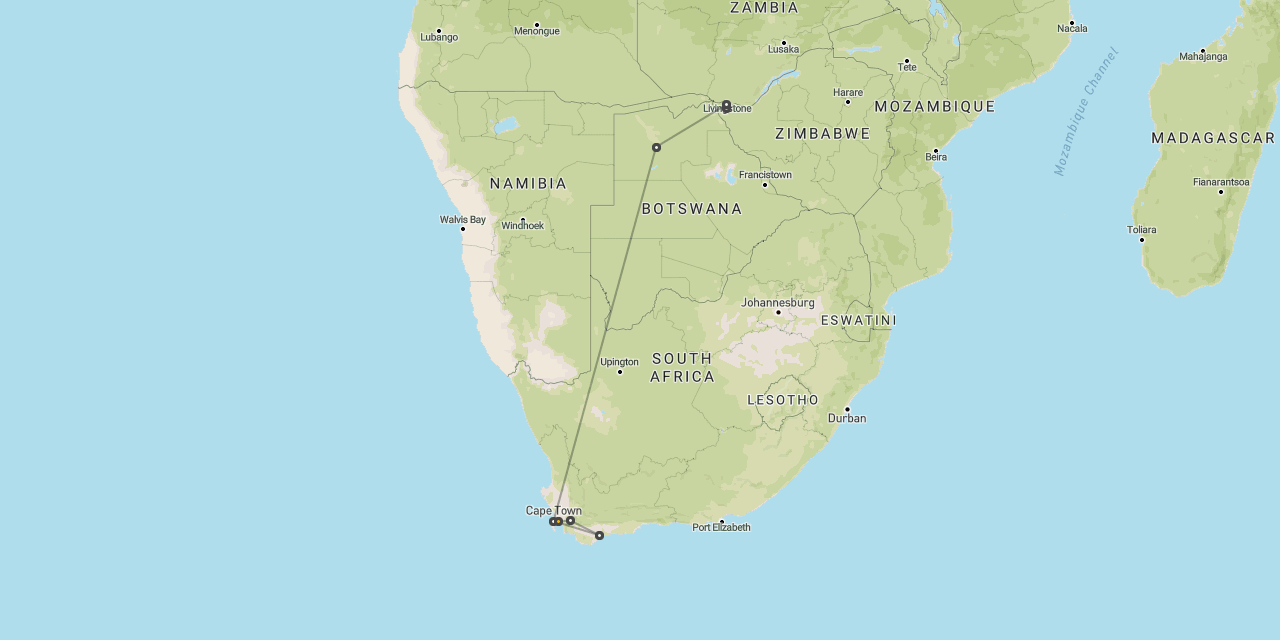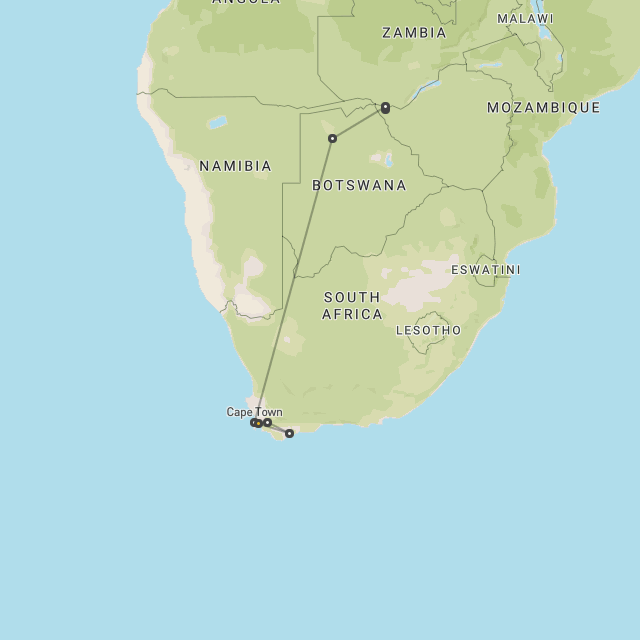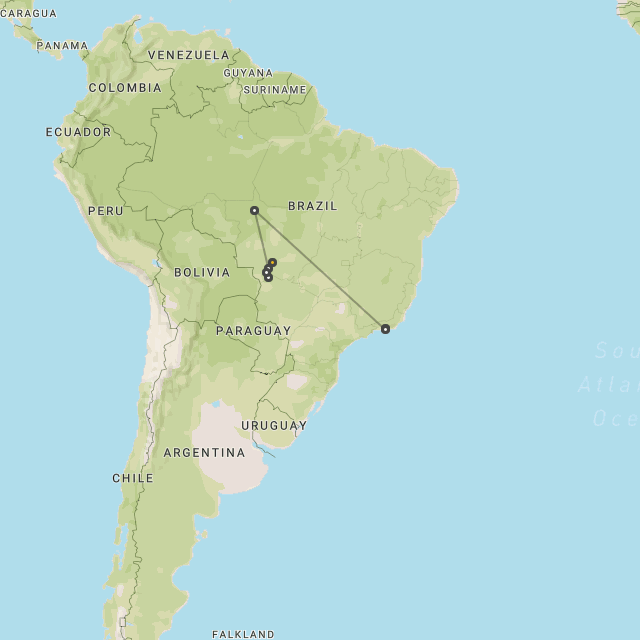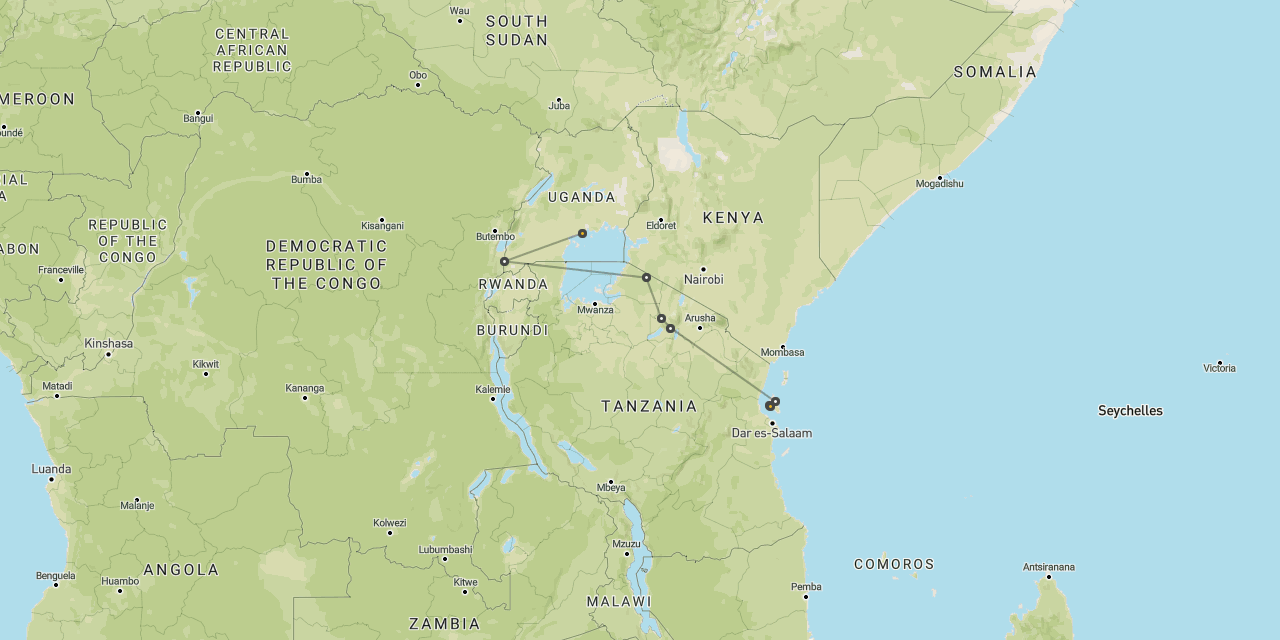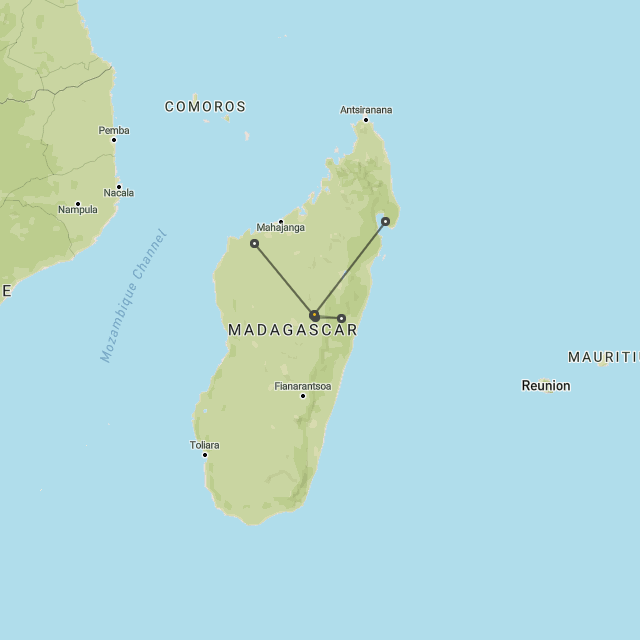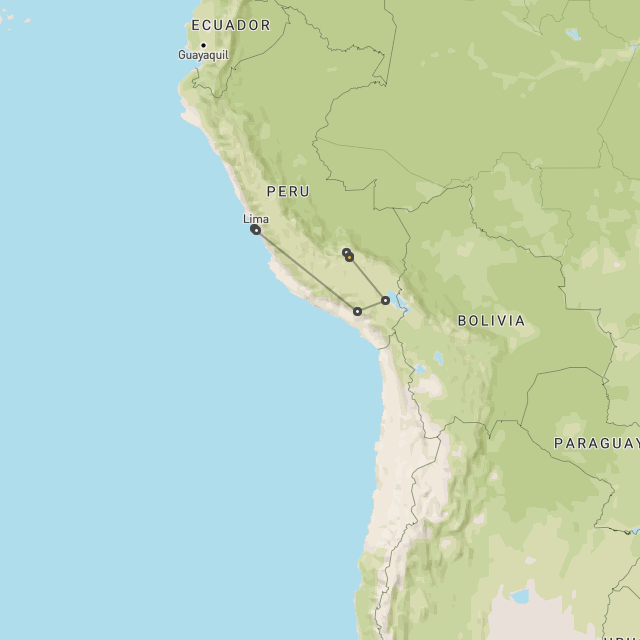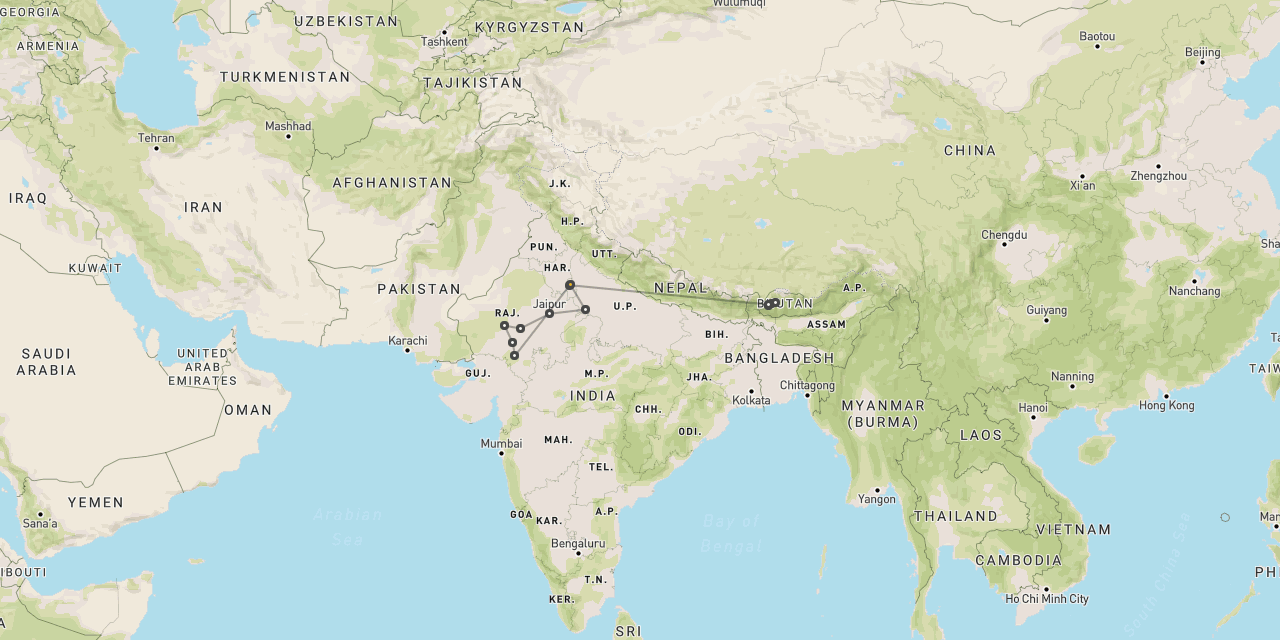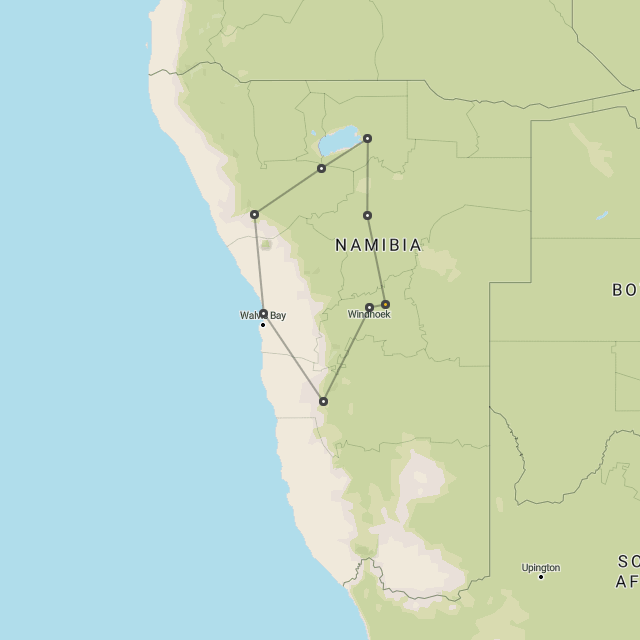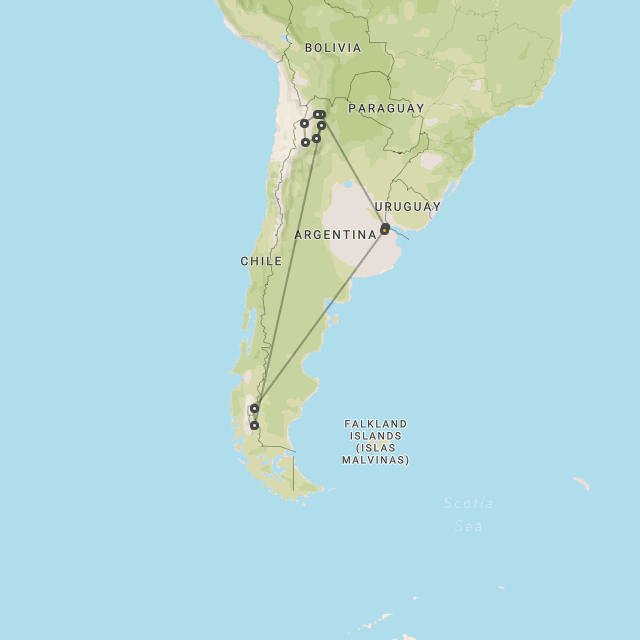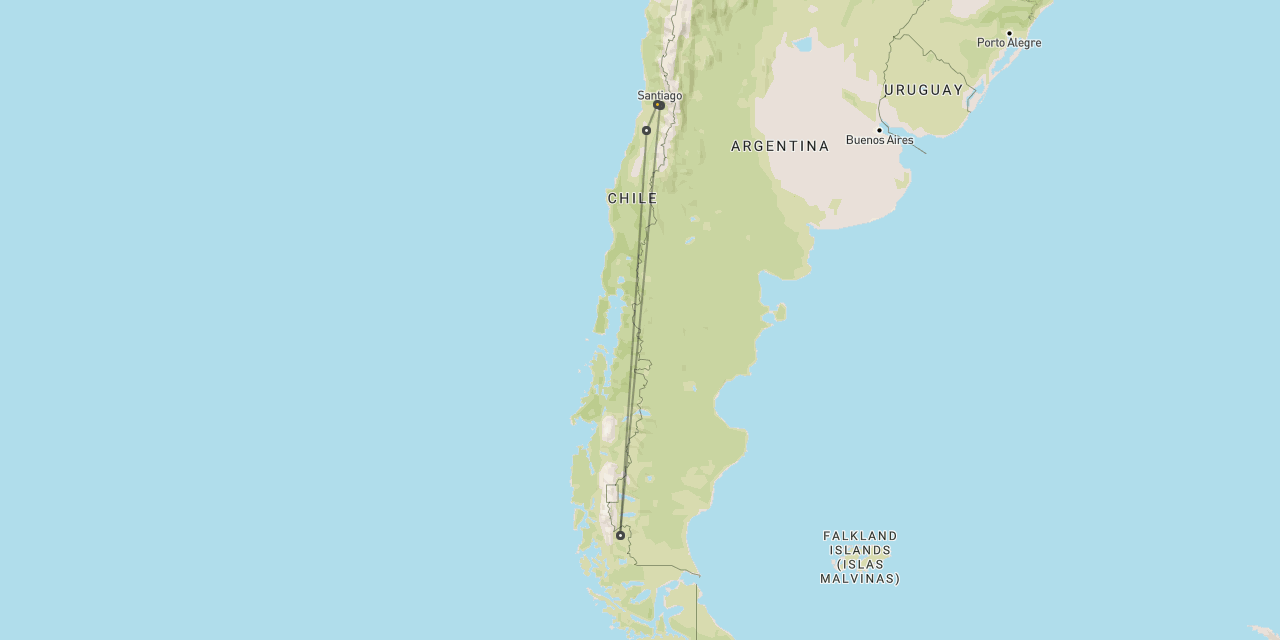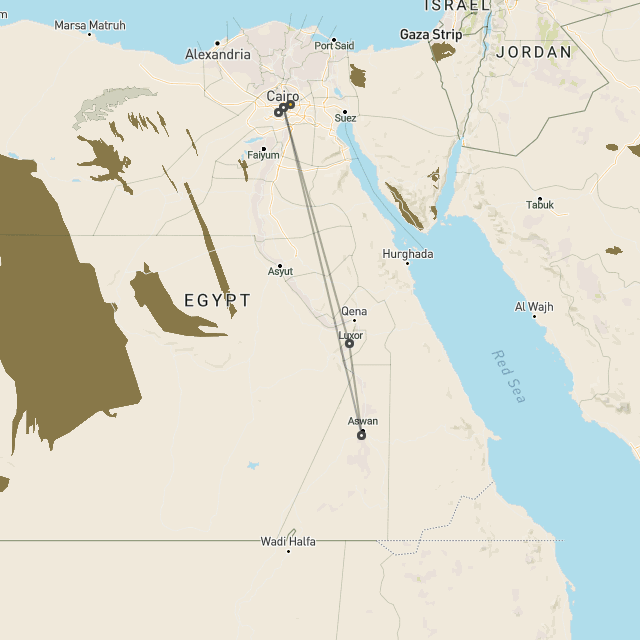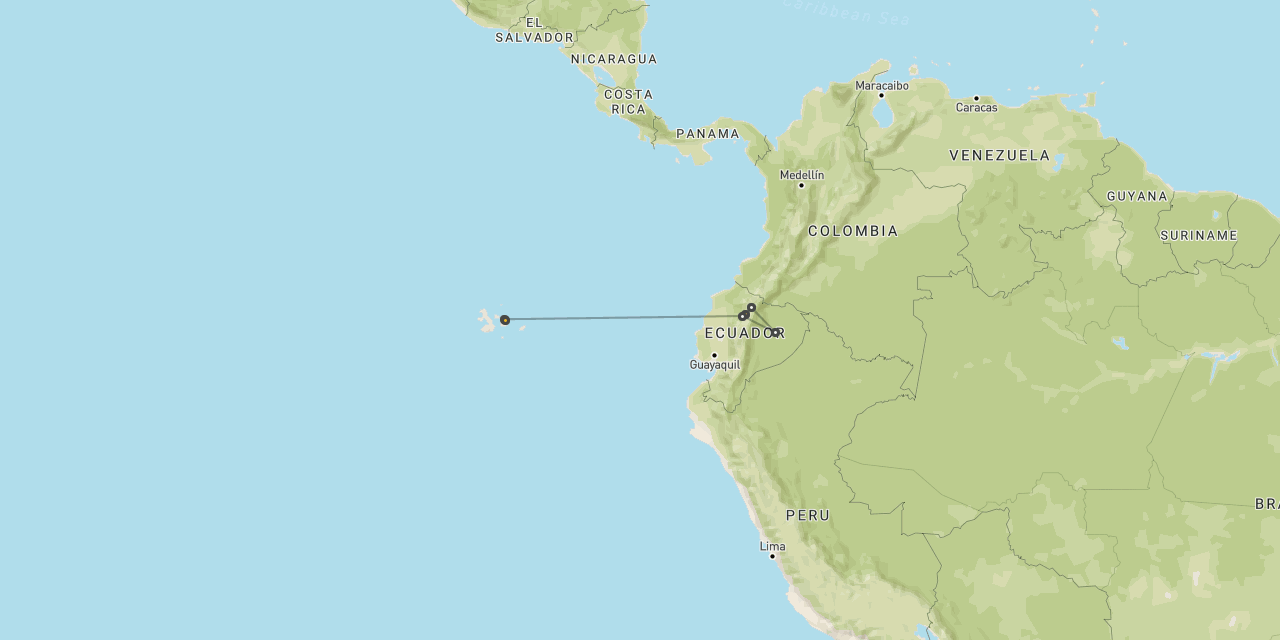- Africa
- Africa : 1 : Best countries for safari
- Africa : 2 : Best locations for safari
- Africa : 3 : The cost of safari
- Africa : 4 : Best time of year for safari
- Africa : 4a : Best locations in January
- Africa : 4b : Best locations in February
- Africa : 4c : Best locations in March
- Africa : 4d : Best locations in April
- Africa : 4e : Best locations in May
- Africa : 4f : Best locations in June
- Africa : 4g : Best locations in July
- Africa : 4h : Best locations in August
- Africa : 4i : Best locations in September
- Africa : 4j : Best locations in October
- Africa : 4k : Best locations in November
- Africa : 4l : Best locations in December
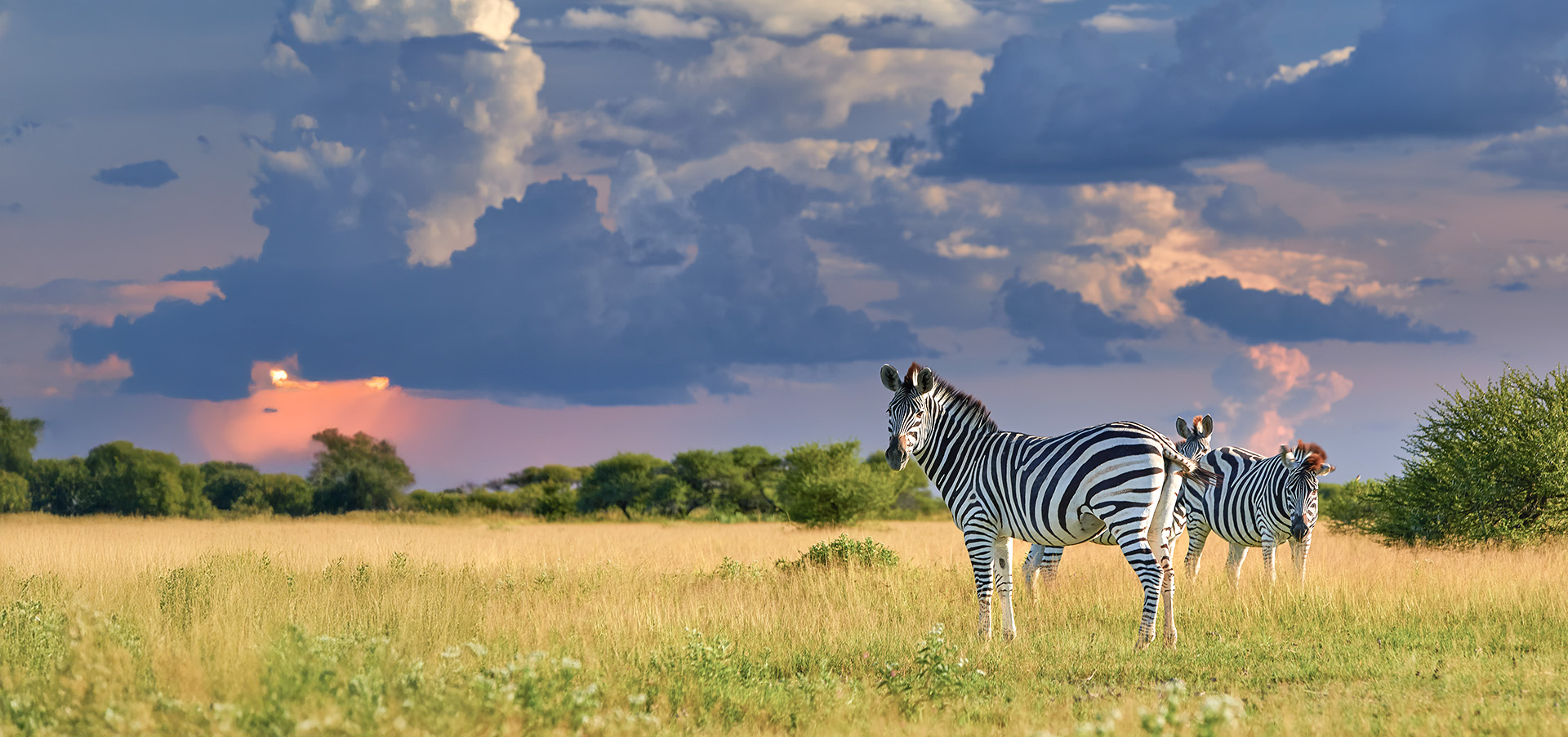
The best locations for safari in Africa in January
January
is an unusual season for safari,
but with some fabulous wildlife highlights
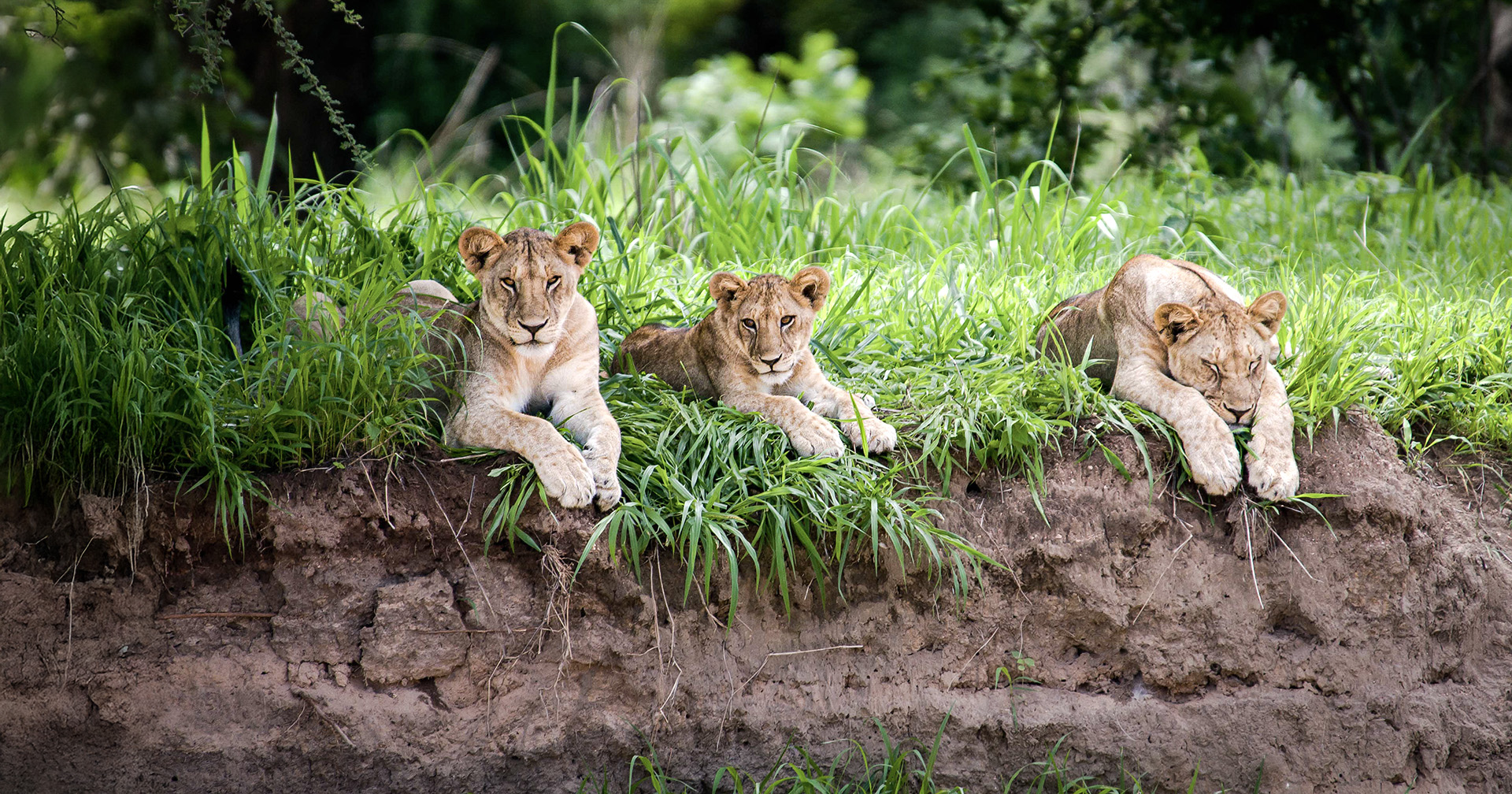
the remarkable migration calving spectacle in Serengeti
When the zebras sense the first strikes of lightning over the mountains of Ngorongoro in November, they lift their heads and start the long walk south through the Serengeti, followed by the wildebeest, around 1.2 million large herbivores on the move.
During December, the leading animal of the great migration herds reach the edge of the shortgrass plains, where they pause.
When the first rain showers hit, within a couple of days the southern plains flush green with the most delicious and nutritious grasses. This is why the herds have travelled so far. These are the grasses that they need to rear their young.
The calving event is an incredible spectacle. The plains are dotted with an apparently infinite number of animals, with babies being born left, right and centre, immediately struggling to stand on their comically wobbly legs.
The herds are accompanied by their attendant predators, large numbers of lions, spotted hyenas, cheetahs and jackals, as well as smaller numbers of wild-dogs and leopards.
This is a very special occasion in the safari calendar and definitely worth going out of your way to experience.
The migration calving is supposedly centred on February, but in truth it can take place any time Dec-Mar, often intermittently through all four months. It depends completely on the pattern of rain showers across the plains.
We are always happy to recommend January. Even if you don’t hit the height of the calving, you will still have an amazing time.
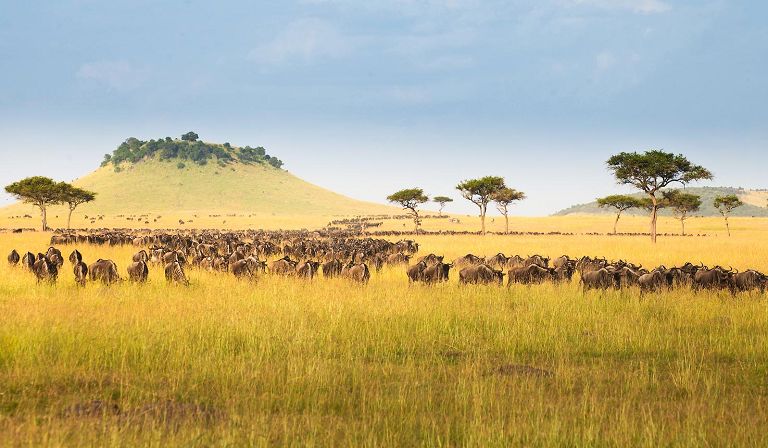
lots of predator action in the Maasai Mara
The most amazing thing about the Maasai Mara is that, even during the rainy season, it can deliver super safari experiences.
The main migration herds may be off in the Serengeti to the south, but the resident wildlife remains strong here, with regular sightings of predators including lions, leopards, cheetahs and spotted hyenas.
The private concession areas to the north of the main reserve are blissfully quiet and offer the chance for walking and night vehicle safari. Even trips down into the often hectic national park are pleasantly traffic-free at this time.
If you are looking for a great short safari in January, then the Maasai Mara is a great option.
If you are planning a longer trip, then the safari reserves in the north of the country (Lewa, Samburu, Mathews Range) all experience far less rain than most safari areas and remain very attractive at this time.
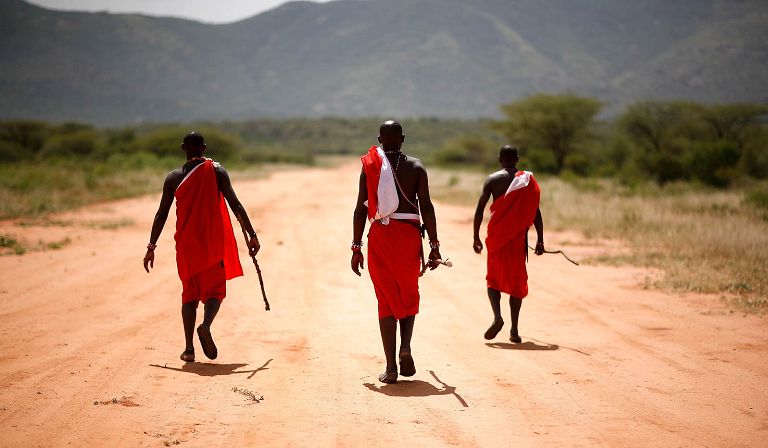
green season wildflowers and baby animals
Being located in the middle of the Kalahari Desert, the Okavango Delta experiences much less rain than surrounding countries.
Wildlife viewing may not be as intense as the May-Oct dry season, but it remains strong. The bush is verdant and pretty, full of wildflowers and baby animals. It is a time of plenty for the animals.
On the open grasslands of the Makgadikgadi area, large herds of wildebeest and zebras should be congregating to have their young.
Botswana is the only major safari country where the lodge prices vary significantly through the year. In January, prices are rock bottom, representing genuinely great value.
The downside is that the temperatures are rather high and most of the lodges do not have aircon, so it can get quite uncomfortable at night.
If you are planning a longer trip, the Cape (Cape Town, Whale Coast, Cape Winelands) is in high summer at this time.
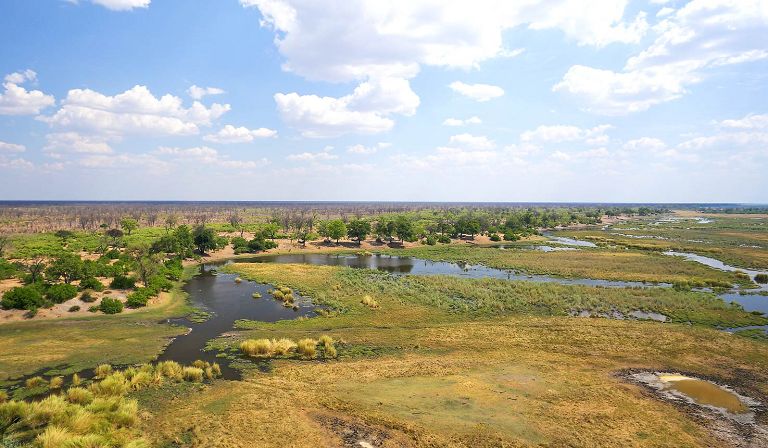
good conditions in almost all areas, especially Kidepo
January is generally considered to be a pretty good month to visit Uganda.
In the Bwindi Forest area, the temperatures are stable at around 22C (70F), but rainfall is falling slightly to around 75mm (3”) through the month.
This rainfall is slightly lower than the annual average and conditions for gorilla tracking should be reasonably good.
In the savanna safari areas at this time, Queen Elizabeth and Murchison Falls share similar conditions to the above and the reduced rainfall should be having a positive effect on wildlife viewing.
Kidepo Valley is in the fifth month of its dry season, with conditions now very good.
Visitor traffic tends to be low after around the 6th of January, but it is always good to book permits as early as possible, to get on the best gorilla families.
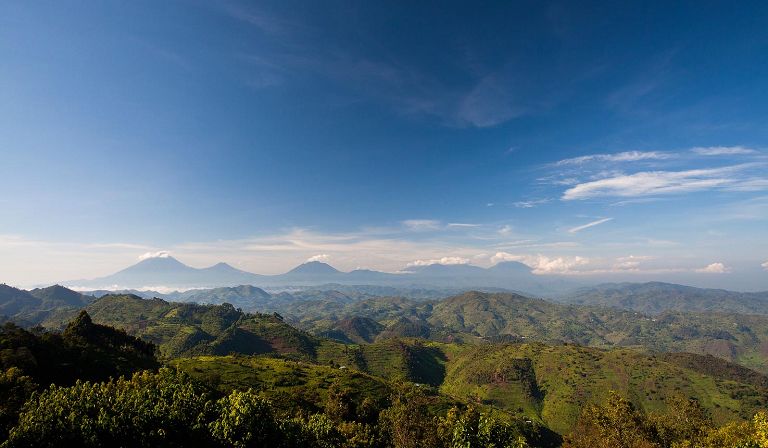
good conditions in all areas
If you are experienced safari travellers and you have a generous budget, then you may consider doing something quite extraordinary and ridiculously off-the-beaten-track.
Chad is visited by private expedition only, in the company of one of the continent’s best safari guides.
The Ennedi Plateau area to the northwest offers epic desert landscapes, whilst Zakouma to the southeast is a high quality savanna safari area.
The two are great in January, since the safari seasonality around the Sahara Desert is contrary to the monsoon systems further south.
Accommodation is in relatively simple mobile tented camps, so you do need to be relatively hardy and outdoorsy to enjoy this extraordinary experience.
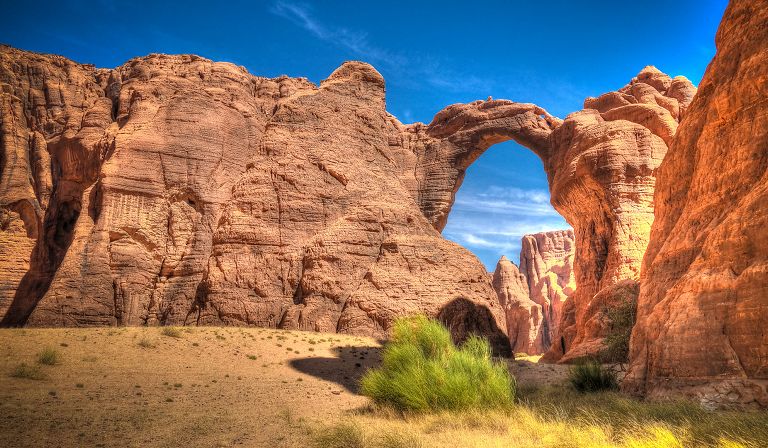
significant rainfall in the savanna safari areas
The Jan-Mar period is the summer green season, the time of year when Namibia usually experiences the bulk of its rainfall and is likely to deliver the lowest levels of animal sightings.
The concern is not usually so much the rain itself (the prevailing conditions should remain warm and sunny), but the effects of the rains on wildlife viewing.
In Etosha, when the rains do arrive, a high proportion of the animals will move away from the permanent water sources and go in search of better grazing in the hinterlands beyond. This can have a very negative effect on wildlife viewing inside the reserve, since these animals become very widely dispersed and move into areas which are not accessible to vehicles. It is possible to spend a whole day inside Etosha and not see a single elephant at this time. The eastern side of the reserve is usually a better bet at this time, since the animals tend to head that way first.
Having said that the rain itself is not usually a problem, we have certainly experienced periods of prolonged overcast skies and regular downpours, especially in January, enough to make us feel like the energy has really leaked out of our safari.
These wildlife dispersal effects are also applicable to key areas further west, including Damaraland North and Twyfelfontein, where the animals often move away from the riverbeds if there is sufficient rain to cover the surrounding hills with grass.
Temperatures in Etosha during the day average around 30C/86F at this time of year, dropping at night only to around 18C/64F. If there are only light rain showers the humidities can rise fast, making for uncomfortable conditions. No rain or heavy rain should lead to more comfortable conditions. Choosing lodges with air-conditioning might be a good idea at this time, although this is not usually so much of an issue as in the preceding season. Areas further west tend not to become so hot and humid.
Visitor traffic tends to be relatively light at this time, although may increase a little over the Easter period (swelled by locals), so traffic avoidance techniques (like staying on private reserves and visiting more remote locations) might need to be deployed.
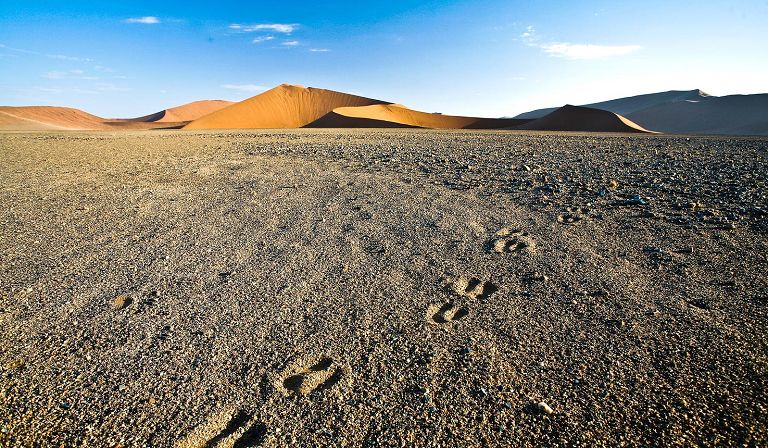
lovely in the Cape, rainy on safari
January is a good time of year in South Africa if you are prioritising weather conditions in the Cape, rather than in the safari areas.
The Cape (Cape Town, Whale Coast, Cape Winelands) is in early summer at this time, which is a lovely time to explore.
The safari areas of South Africa (Kruger, Madikwe, Tswalu, Waterberg) are in the middle of their hot rainy season, which is far from ideal, but could be okay if this is a less important part of your trip.
If you want to travel in January and safari is important to you, then it might be worth exploring options in Botswana, Namibia and Tanzania.
Visitor traffic in January falls fast after New Year in the safari areas, but the Cape areas remain popular throughout.
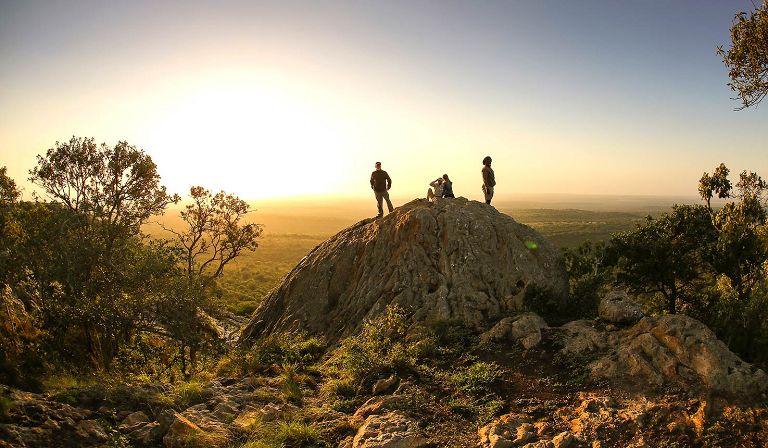
fabulous conditions, but very busy over the vacation period
January is generally considered to be a very good time to visit Egypt.
At this time of year, the temperatures are dropping to a comfortable 23C (73F), with rainfall down at 0mm (0”) and sunshine hours up at 10 hours per day, despite the shorter day length.
Temperatures at night can drop as low as 5C (40F).
Visitor numbers are medium through the latter part of the month, but very high before around the 6th of January, creating an urgent need for early booking and traffic avoidance measures.
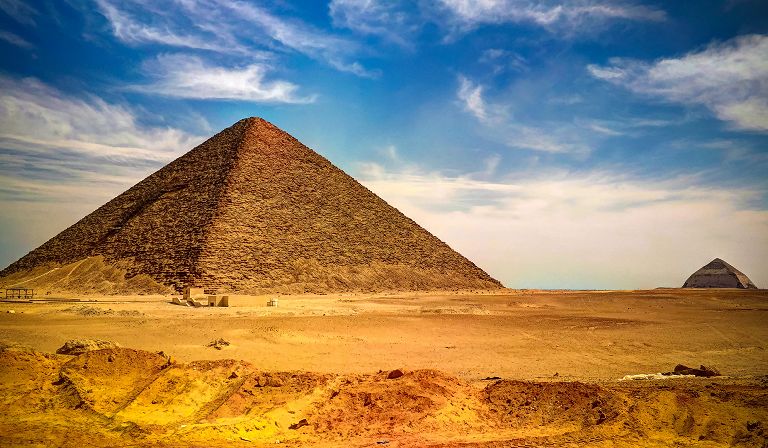
great conditions in almost all areas
January is generally considered to be a very good time of year to visit Ethiopia.
Most areas have a similar climate to the capital, Addis Ababa, with temperatures around 24C (75F) and rainfall down at 25mm (1”) for the month.
The Tissisat Falls on the Blue Nile at Bahir Dar are at their best during the high water period of Jul-Dec and can be running rather low by January.
The Danakil Depression is the hottest place on earth, so conditions are never easy down there. November is one of the better months, when daytime temperatures usually ceiling around the 40C/104F mark.
The remote Gambella area is accessible at this time, but it is too early for the kob migration.
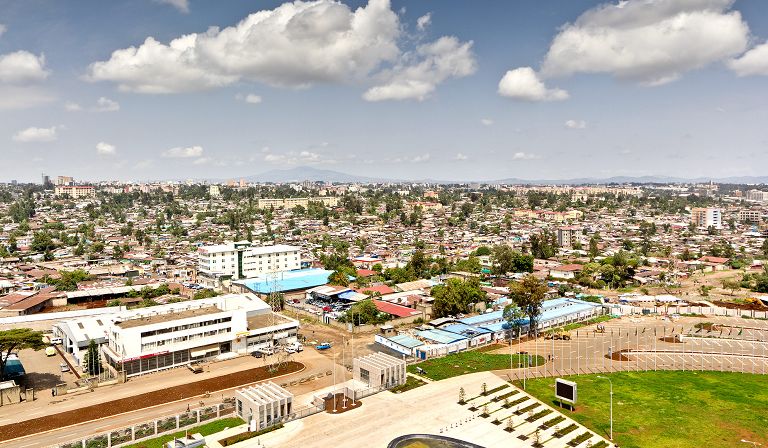
lovely cool and sunny weather for exploring
January is generally considered to be a very good time to visit Sudan.
At this time of year, the temperatures are down at a relatively comfortable 24C (75F), with rainfall down at 0mm (0”) and sunshine hours up at 11 hours per day, despite the shorter day length.
Visitor numbers are always low.
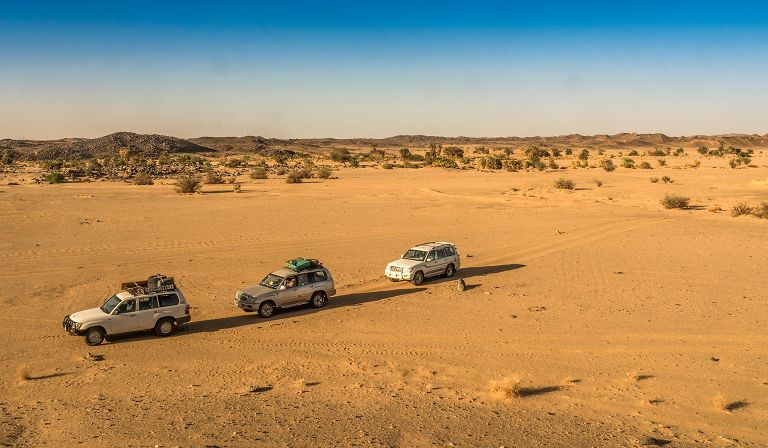
a period of lower rainfall
January is generally considered to be a relatively good time to visit the Congo.
In the key Odzala-Kokoua gorilla areas, temperatures are stable year-round at an elevated 34C (93F), dropping to only 18C (64F) at night, which can be a little bit challenging, especially in lodges with fans and no air-conditioning.
This is the first month of the short dry season, albeit with rainfall still up around 100mm (4”) for the month. However, this does mean that the tracks should be slightly easier to navigate when out gorilla tracking.
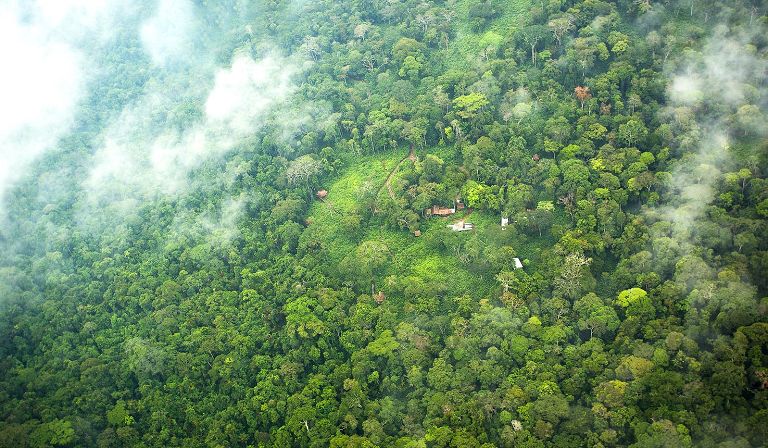
Further reading
- Safari in Africa
- The best countries for safari in Africa
- The best locations for safari in Africa
- The cost of safari in Africa
- The best time of year to go on safari in Africa
- The best locations for safari in Africa in February
- The best locations for safari in Africa in March
- The best locations for safari in Africa in April
- The best locations for safari in Africa in May
- The best locations for safari in Africa in June
- The best locations for safari in Africa in July
- The best locations for safari in Africa in August
- The best locations for safari in Africa in September
- The best locations for safari in Africa in October
- The best locations for safari in Africa in November
- The best locations for safari in Africa in December
- Why to choose us to help with your safari
let us know your thoughts about Africa
and we will make sure to deliver the perfect trip
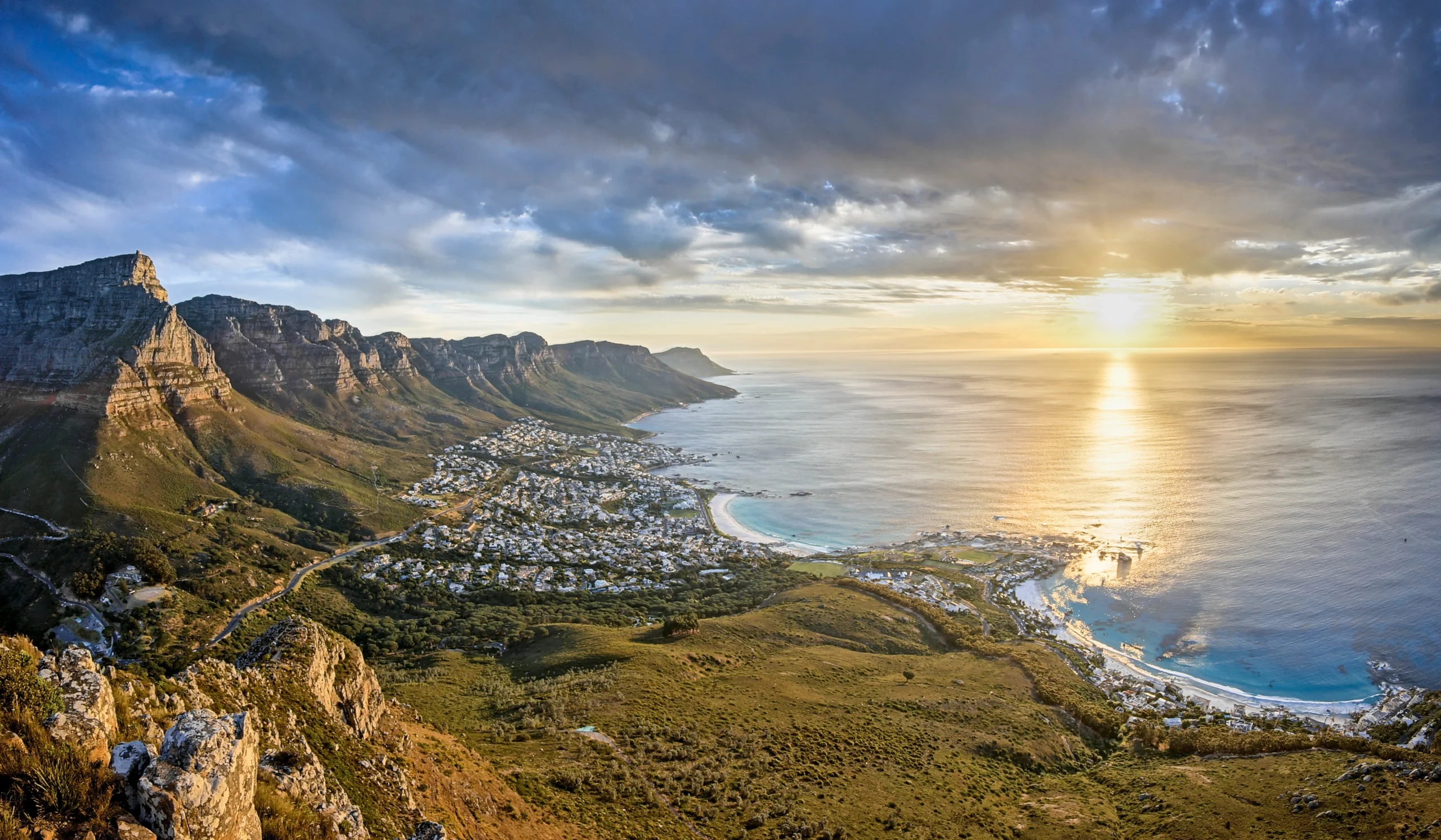
Extraordinary tailor-made adventures,
from earthy and edgy to easy and extravagant
From around USD 2500 per person, you set the ceiling
Sample Trips
Here are some of our popular trip shapes
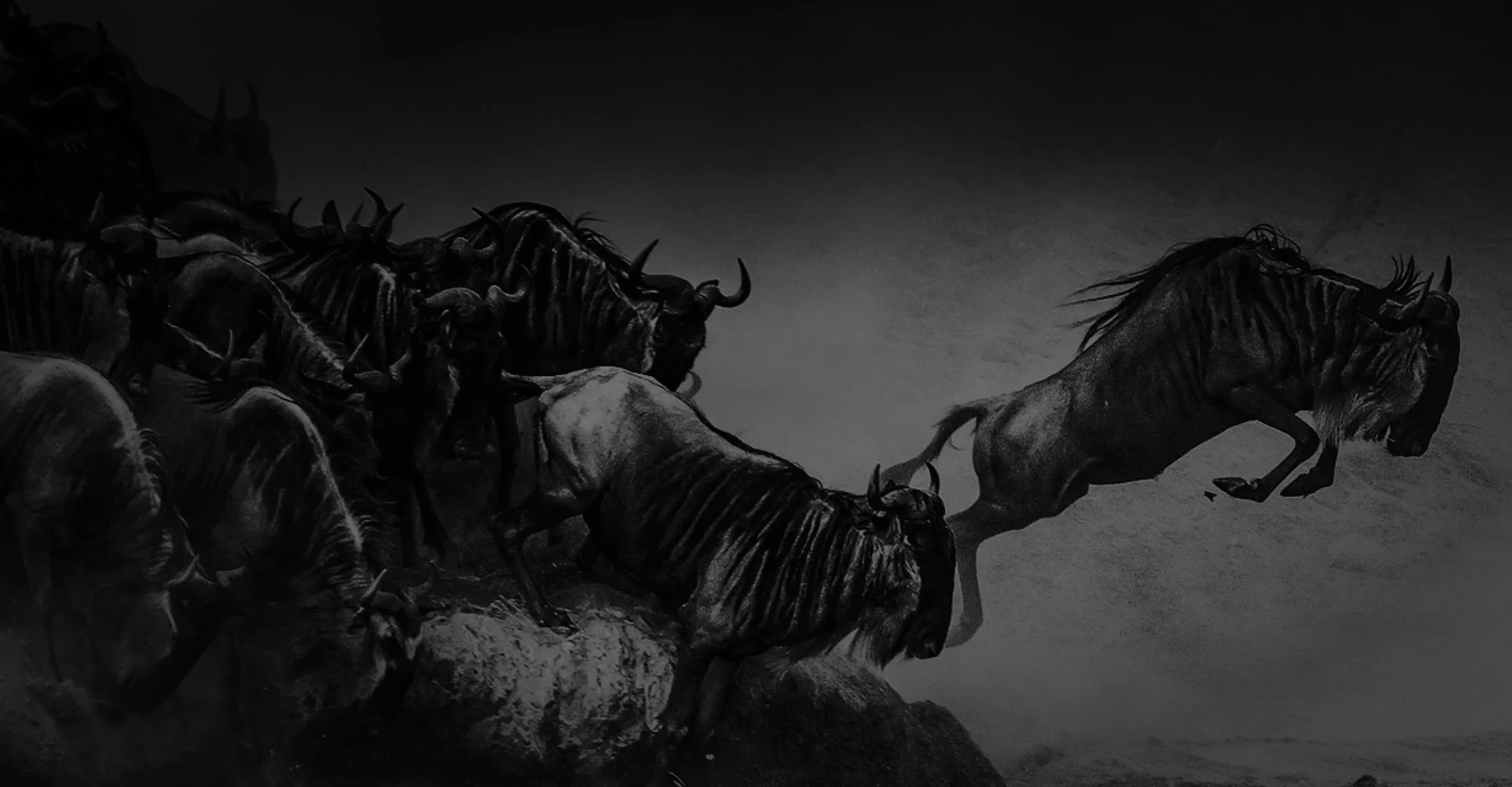
Get started on your trip
It’s never too soon to get in touch, we are here to help with every stage of your planning.
